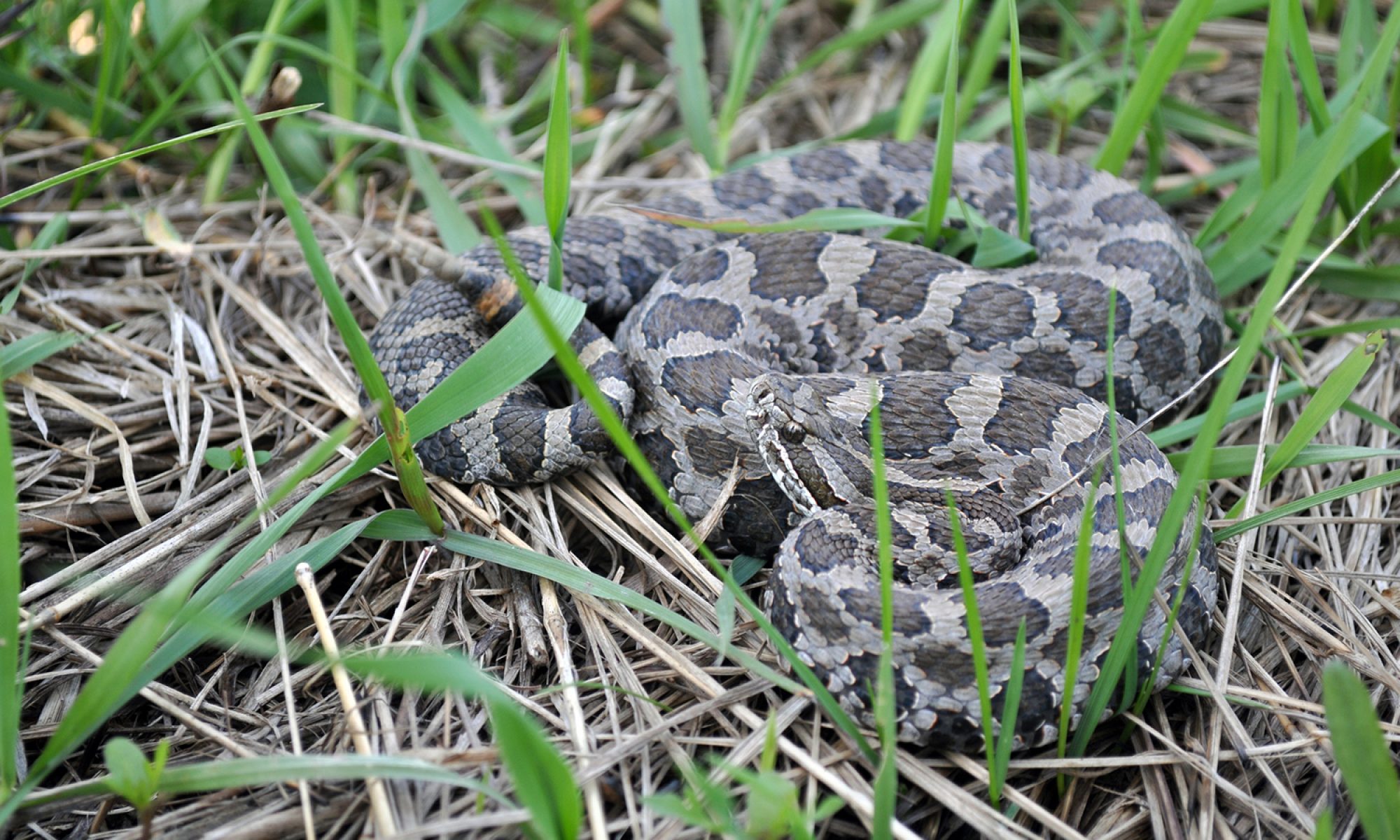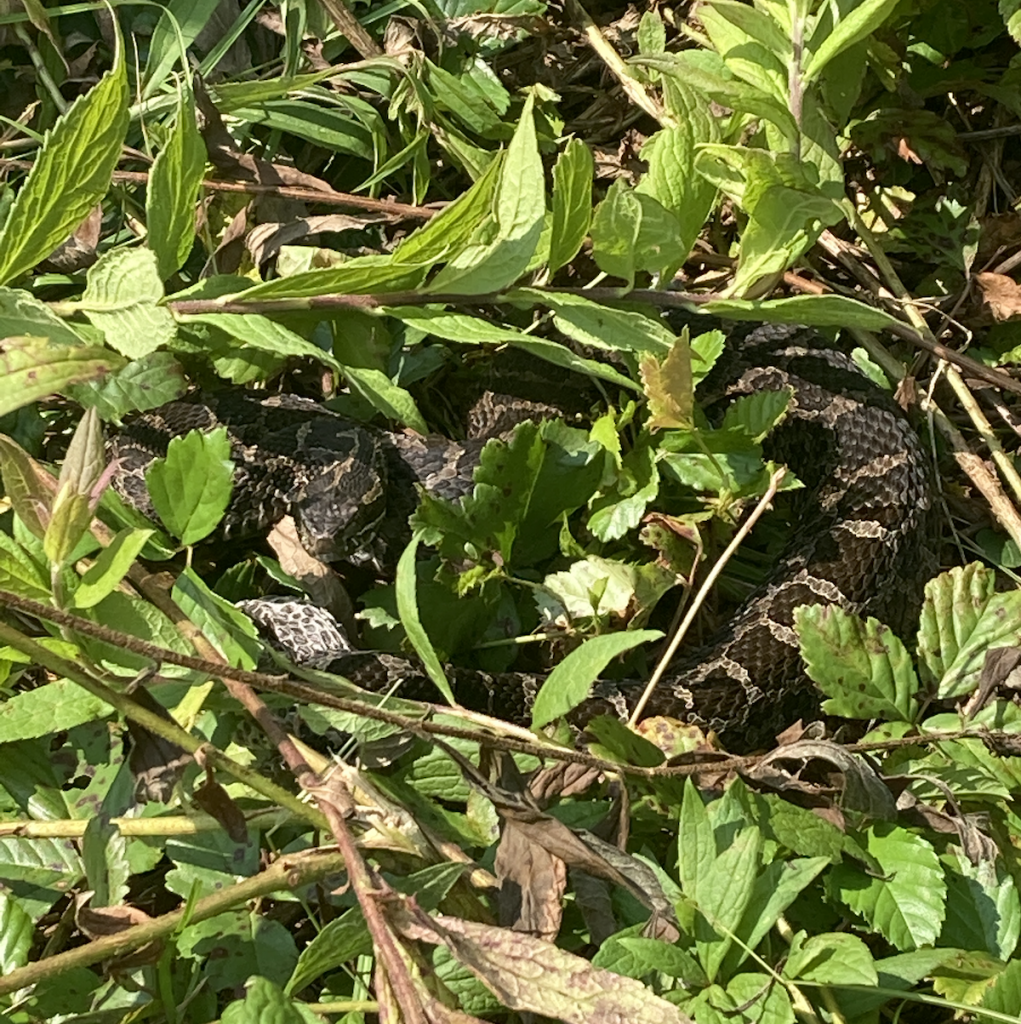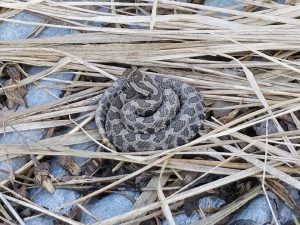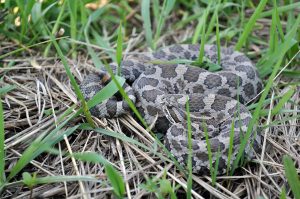Current PaCE Lab graduate student Zander Perelman had two papers published recently from his M.Sc. research on Eastern Massasaugas in Pennsylvania.
The first paper reported on the prey community at a restored meadow in western Pennsylvania.
Often, restoration projects are focused on removing unwanted vegetation and re-establishing the plant community with the notion that “if you build it, they will come.”
In 2012, habitat restoration began at a well studied Eastern Massasauga site that had deteriorated through forest encroachment and natural succession. Restoration and follow up active management removed the canopy cover and returned it to a grassy meadow.
In 2021, to assess whether restoration efforts had created suitable habitat to supports prey species suitable for EMRs, Perelman and his colleagues conducted surveys of terrestrial vertebrates at the site using drift fences, cover objects, funnel traps, Sherman live traps, and active searches. Over 4 months they caught 9 species of amphibian, 10 species of reptile, and 11 species of mammal, for a total of 656 vertebrates. Their samples included 12 species documented as Eastern Massasauga prey items, many in high numbers.
Based upon their sampling they determined that the vertebrate community in the restored meadow habitat may provide the resident EMR population with a prey base that can support reproduction and sustainable population growth.
The second paper analyzed and formally described combat rituals between two male Eastern Massasaugas in the presence of a radio-implanted female. While tracking a gravid female, a male was observed nearby. Two days later, a second male was observed near the pair and Perelman was able to record 17 minutes of male-male combat.
This video provided the first formal analysis of these behaviors of male Eastern Massasaugas in the wild. The snakes spent much of their time in a raised and engaged position (RE), but also were intertwined for over a minute, attempted to top each other, and tongue flicked. The snake who ultimately copulated with the female appeared to be more persistent and engaged in the combat and perhaps most importantly, was more successful in topping his opponent..
Read the full papers:
Contact Zander Perelman for more information
Follow our lab to keep with additional Eastern Massasauga research




